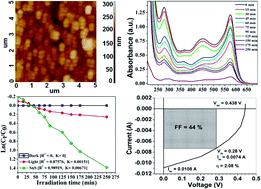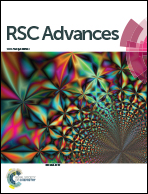Electrochemically synthesized microcrystalline tin sulphide thin films: high dielectric stability with lower relaxation time and efficient photochemical and photoelectrochemical properties†
Abstract
A detailed study has been carried out on the structural, dielectric and impedance properties of polycrystalline p-type SnS thin films grown on transparent conducting oxide (TCO) coated glass substrates from an aqueous solution of tartaric acid, SnSO4 and Na2S2O3 by a modified electrochemical technique. The as-deposited films were found to be smooth, almost pinhole free and well adherent to the bottom substrate. X-ray diffraction studies revealed the formation of polycrystalline SnS films with an orthorhombic phase. Field emission scanning electron microscopy and atomic force microscopy revealed a moderately compact surface morphology with evenly distributed almost spherical grains. Optical measurements showed direct band gap energy of 1.5 eV. Detailed electrical (dc and ac) analyses showed the p-type nature of the deposited films with unique dielectric behavior. The band-gap energy, resistivity, dielectric constant and relaxation time make this material and ideal absorber layer, which is also reflected in the efficient photochemical and photoelectrochemical behavior.


 Please wait while we load your content...
Please wait while we load your content...